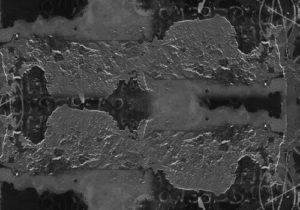What is Creosote?
When a fire is burned and organic fuel is burned (wood) there are natural byproducts released through the chimney. This byproduct, which homeowners just call smoke includes: smoke, water vapor, gases, unburned wood particles, hydrocarbon, tar fog, and other minerals. As these warm gases and particles rise up the chimney and cool, condensation occurs and residue is left on the chimney walls. This residue is called creosote. It seems tar-like and black or dark brown in color. This is because tar makes up a lot of it. It can appear drippy, sticky, shiny, and hard, undergoing its own process of heating and cooling. When creosote heats up it  begins to melt and liquefy. Afterwards, it cools into a hard, glazed substance that is highly flammable.
begins to melt and liquefy. Afterwards, it cools into a hard, glazed substance that is highly flammable.
As this process continues, more creosote builds onto the existing creosote. Consequently, creating a large and very flammable mass that can create the perfect conditions for more buildup, and flue fire!
Creosote and Fire Risk
Creosote is highly flammable and it exists in all chimneys where wood is burned, though some conditions are better than others:
- First degree creosote buildup occurs under the best conditions. It is a thin layer of soot that is easily removed by scheduling a standard chimney sweep with a CSIA Certified Chimney Sweep® (CCS). A certified chimney sweep can remove this layer of soot with standard tools like brushes and a vacuum system.
- Second degree creosote buildup is like sooty. In addition, it’s more shiny and produces black flakes that are flammable. This stage of creosote is a different consistency. Plus, it’s more difficult to remove, but still possible. This type of creosote is a result of restricted air flow. It usually occurs with wood stoves and fireplaces with glass doors.
- Third degree creosote buildup, also called glazed creosote, is considered a serious fire risk. It appears glossy and hard. Also, it’s primarily made up of tar, which is a highly concentrated fuel inside your chimney. Every time this creosote melts and hardens, as it heats and cools, it becomes harder and more concentrated. Glazed creosote, in it’s different stages can be gummy, hard, or porous. It is difficult to remove with brushes. However, calling a professional is the best way to get your chimney back to working order.
Creosote Removal
The three stages of creosote buildup do not occur overnight, and actually can occur over many years. You can avoid creosote buildup completely by scheduling preventative maintenance like annual chimney inspections and regular chimney sweeps. Removing soot from the flue liner walls prevents the transition from soot to creosote and it is easier and cheaper to remove in the early stage. Paying for preventative maintenance periodically can save you from catastrophic damage, costs, and insurance claims later.
Have you used your chimney for awhile? Maybe years, without scheduling an inspection or routine chimney sweep? If so, there is no better time than today! Contact us at Chesapeake Chimney and prevent dangerous creosote from putting your family at risk.

Recent Comments